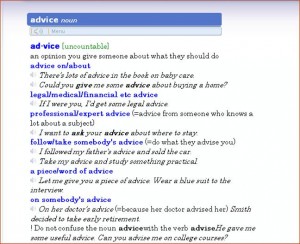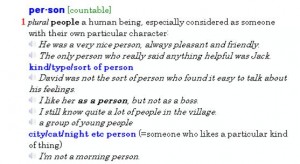What happens when your grammar and sentence structure is correct, but you cannot explain WHY something is correct? First, I say Be glad that it is correct! But of course you are curious and a thinking person and you want to know more and you still want to know why! You want to understand the language.
Here is a question received that shows just such a case:
Grammar can be very confusing. I have a question. I’m very familiar with causative verbs but what about this:
“I saw my mother park the car.” “Saw” is not a causative verb. “Mother” is the D.O. What is “park?” I’m using an infinitive without “to” but I can’t explain it.
Please help.
Gerry Reissman
***
Here is our first response of what turned out to be a lively dialogue:
Gerry,
In the sentence you provided us, the direct object (D.O.) is a noun phrase “my mother park the car”. The sentence would be diagrammed as: Subject: “I”. Verb: “saw”. DO: “my mother park(ed) the car”.
Analyzing the noun phrase, “my mother” is the subject of the noun phrase, “parked” is the verb, and “the car” is the direct object of the noun phrase.
Please explain your thinking that you are questioning the use of the infinitive “to” in this sentence, so I can see where that idea is coming from.
Also, there are no causative verbs in this sentence.
The only two legitimate grammatical possibilities are “I saw my mother park the car” and “I saw my mother parking the car”. Do you see the differences (grammatical and otherwise) between these two sentences?
Brian, are you thinking “Why doesn’t this sentence follow the same structure as…..(for example)…”I want my mother to park the car”?
ESL Help! Desk
—–
Gerry responded:
Thank you very much for your help but maybe I was not thorough with my question.
I recognize the noun clause with “mother” as the subject and “park” as the verb (not “parked”).
So if “park” is the verb of the noun clause, where is the subject-verb agreement?
Why not “I saw my mother parks the car?” We wouldn’t say that.
That’s why I thought “park” was the infinitive form without “to.”
Can you explain the lack of subject-verb agreement?
Thank you.
***
We responded:
Do you know anything about diagramming sentences? Get a paper and pencil!
The key here is the rule of VERBS OF PERCEPTION, such as “see”, “hear”, “smell”, etc.
The sentence that you see derives from an underlying sentence that would be diagrammed as: Subject: “I” Verb: “saw” Direct Object: “my mother parked the car” and that noun phrase derives from Subject: “my mother” Verb: “parked” Direct Object: “the car”. In the underlying sentence, there is no subject-verb agreement because the verb is simple past tense. But in the higher layer, the one we use for communication, the RULE is that we use the BASE FORM of the verb after the VERB OF PERCEPTION, “(to) see” or in this case, the past tense “saw” when the verb of the noun phrase is either simple past or simple present tense.
There is one other option: Let’s say noun phrase of the underlying sentence uses the past continuous tense: “My mother was parking the car”. In such cases, we do away with the helping verb “was” and the end sentence is “I saw my mother parking the car.”
The rule applies even for the present tense. “I see you looking at me!” results when the underlying sentence is “You are looking at me”. Or this one: “I see her park every day” is what we express when the underlying sentence is “She parks every day”.
Why is this so?
I don’t know where this transformation occurred, whether it is the influence of another language early in the development of English, whether it is the miracle of the human brain, and the natural evolution of human language. But this is how English is, at this point in time.
There is a legitimate English sentence that maintains the subject-verb agreement: “I saw (that) your other parks her car” but that has a different meaning and that different meaning would probably be reflected verbally in a different inflection. Perhaps it would be said in a tone of surprise. “Brian, I saw (that) your mother parks the car in the street. Why doesn’t she just park the car in the driveway?” Or “Brian, I saw (that) your mother parks her own car. Why doesn’t she use the valet service?”
The above sentence and sentence structure is a statement of general truth, not a referral to a particular instance, as in your original sentence, “I saw my mother park the car (this morning when she got home from shopping)”, which can be attributed to a particular time and place.
Are we being thorough enough?
the ESL HELP! Desk
We followed up with this comment:
Gerry,
By the way, in both “I saw your mother parks the car in the street. Why doesn’t she just park the car in the driveway?” and “I saw your mother parks her car. Why doesn’t she use the valet service?” and sentences of that nature, referring to general situation not specific instance, the “that” can be omitted. It exists in the lower transformation. Hence, it is possible to say “I saw that your mother parks the car in the street. Why doesn’t she just park in the driveway?” or “I saw that your mother parks her car. Why doesn’t she use the valet service?”
In your original sentence, “I saw my mother park the car (when she got home from shopping)”, in which we are referring to a particular instance (and also “I saw my mother parking the car”) the “that” does NOT exist in the lower transformation. Thus, one CANNOT say “I saw that my mother park the car when she got home from shopping.”
Just to make sure you have the fuller picture.
And we were happy to receive this concluding remark:
***
Yes, you are being extremely thorough and I can’t thank you enough for your time. Thank you very much!
******

 Soon a
Soon a decision was made to combine the birthday celebrations for our Presidents, so an unofficial holiday developed.
decision was made to combine the birthday celebrations for our Presidents, so an unofficial holiday developed.


